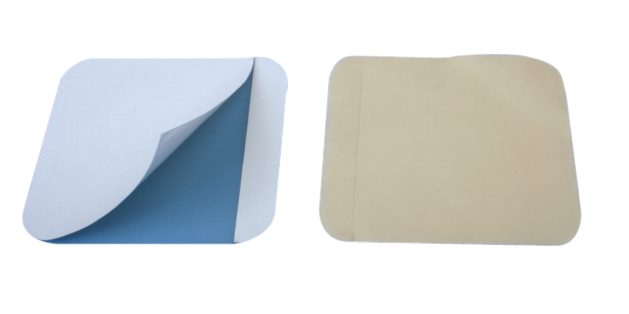Order now Hydrocolloid Wound Dressing Online at the best prices. And it can help you to reduce pain, promote the formation of granulating tissue, prohibit bacteria infection, and speed up the healing process.
Hydrocolloid Wound Dressing

A wound
dressing is a type of bandage used to cover a wound and stick to the surrounding skin by glue or wound dressing tape. It can either be in the form of a gel (hydrogel), foam, gauze, bandage, and other wound dressing patches. Most wound dressings consist of compounds such as polymers, elastomers, and natural products.
Wound
dressings help with the prevention of infection, encourage healing, and reduce pain. Different wound dressing types are useful for different kinds of wounds.
Examples of these other dressings include wet-to-dry bandages, alginates, hydrogels, and film dressings. These dressings are also used after surgery or to treat severe injuries or burns.
In theory, if it protects a wound from contamination and allows it to heal, then it's a wound dressing. Yet, the term is more often used to describe bandages worn to prevent hard calluses from forming.
First, we should look at how treating the wound affects the dressing used. That way, you're confident that you know you've made the right choice.
Pre-Treating the Wound
Health professionals use a wide range of techniques when assessing injuries. Most, though, begin by evaluating what happened. They do this to make sure they understand the nature of the wound and how best to treat it.
For example, you may hear something like this "The wound is open with an extended defect." This means that there's a break in the skin that extends to the fat or muscle layer.
That's fairly serious and would require a dressing that protects the wound from further exposure. Hydrocolloid Wound Dressing It may also mean that you need to stop the bleeding, remove debris, and apply antibiotics before using a dressing.
STEP ONE: STEM THE BLOOD FLOW
The first step is keeping any living tissue alive. In doing so, the aim is to stop infected blood from entering the body's healthy areas. This is hemostasis, which keeps oxygen circulating so that healthy cells can regenerate.
For example, suppose a vein collapses in a profound or severe wound. In that case, doctors use stitches and a small tube called a catheter to help the blood vessels.
The catheter's tip lives under the skin. It sticks for up to three weeks and delivers a steady amount of oxygenated blood through the wound.
STEP TWO: TREAT INFECTION
If a wound becomes infected with bacteria or fungus, doctors administer antibiotics. This stops the infection from spreading.
If this is not enough to heal the area, they may proceed with debridement or dead tissue removal. This is a manual process, using hands and tools like forceps and scalpels. But it is also sometimes achieved through radiation therapy or surgery.
STEP THREE: CLOSE THE WOUND
After debridement, doctors use sutures or surgical staples to close any remaining wounds. Next comes the rehabilitation process.
Doctors may opt for a cast, splint, or shoe to keep the joint safe where the damage occurred, such as in the ankle, knee, or hip. They can also recommend physical therapy. This helps improve mobility and prevent any injury from occurring during exercise.
STEP FOUR: RE-EVALUATION AND WOUND DRESSING
Once closed, doctors re-evaluate the wound and, if needed, keep treating the injury. The first action for damaged skin is to clean it with sterile water or saline solution.
Then, cover it using a sterile dressing to keep germs away. This is where the different wound dressings come into play.
